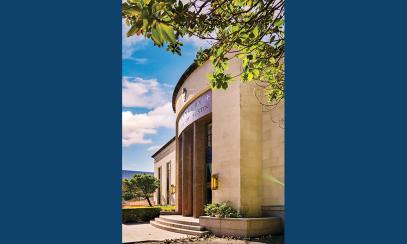
Catholics came to the Diocese of Austin more than 200 years before its founding
As early as 1730, Catholic worship was present in what became the Diocese of Austin more than 200 years later. Indeed, the Austin area was home to the first worship center in the future diocese that bears its name. On July 27, 1730, Franciscan missionaries combined three east Texas missions, in operation since 1721, and moved them to the southern banks of the Colorado River in Austin under the name San José de los Nazonis.
As early as 1730, Catholic worship was present in what became the Diocese of Austin more than 200 years later. Indeed, the Austin area was home to the first worship center in the future diocese that bears its name. On July 27, 1730, Franciscan missionaries combined three east Texas missions, in operation since 1721, and moved them to the southern banks of the Colorado River in Austin under the name San José de los Nazonis.
A Texas Centennial historical marker places the mission in Zilker Park (in downtown Austin), but some believe it may have been elsewhere. Archaeologists have made several digs at Zilker and have not found archaeological evidence of the mission in that location.
Camino Real de los Tejas executive director, Steven Gonzales, believes the Spaniards most likely would have placed the mission on the Camino Real, where “they would have easy access” to goods and services and the protection available from the road. Furthermore, he said, the Camino Real crossed the Colorado River east of the present-day Montopolis Bridge, making that area more likely to have been the mission’s location. The spot offered an expansive view to the east from where Native Americans might come either seeking spiritual direction or with designs to attack the missionaries.
Seven months after setting up the mission on the Colorado, the Franciscans moved it to San Antonio. As a result, there was no Catholic presence in the area for the next 15 years.
Then, in 1745, natives representing the Yojuane, Deadose, Mayeye and Ervipiame tribes went to San Antonio to ask the Franciscan missionaries to take their ministry to the San Xavier River (now known as the San Gabriel). After the natives returned to their home on the San Xavier, Franciscan Father Mariano Francisco de los Dolores began ministering to them until he could get official approval from his superiors at Queretarto. In time, New Spain established three missions near present-day Rockdale in Milam County. The missions included San Francisco Xavier de Horcasitas, San Ildefonso and Nuestra Señora de la Candelaria.
However, the military based at Presidio Nuestra Señora de Loreto in Goliad was reluctant to assume project protection. Mexico City, however, repudiated the soldiers’ claims and directed them to follow orders and execute the plans of establishing three missions at the San Xavier without delay. Therefore, on Jan. 23, 1748, higher ups ordered the governor to proceed with the missions as initially planned.
The relationship between mission and presidio never seemed harmonious. In December 1751, 50 troops came to build a presidio near San Francisco Xavier de Gigedo; however, Captain Felipe de Rábago y Terán remained reluctant. Moreover, his lustful behavior prompted the pastor to excommunicate him and his entire troop.
The natives, perhaps taking a cue from the Spaniards’ differences, were unsure of their position. Some were committed to learning the new faith and language, and others took advantage of the Spaniards’ disputes to make trouble or to return to their old lifestyle. For example, on May 11, 1752, the presidio captain at San Xavier accused the Coco tribe of murdering Father Joseph Ganzábal and Juan Saenz de Zevallos. The investigation exposed many aspects of life in the mission, which indicated its fragility.
Four years later, Governor Pedro de Barrio Junco y Espriella visited the missions and found that San Francisco Xavier de Horcasitas and San Ildefonso taught more than 200 novices each. Nevertheless, on Nov. 3, 1756, Spanish officials ended their missionary efforts at the San Xavier River and moved the missions down the Camino Real to San Marcos Springs.
Upon arrival on the San Marcos River, a thousand Apaches came to the missions for conversion. The novices were sent to the San Antonio missions and the presidio to Santa Cruz de San Sabá Mission (initially in the Diocese of Austin but transferred to the new Diocese of San Angelo in 1961). San Saba was short-lived. In March 1758, 1,500 Comanche and other Texas tribes came in search of the Apache and razed the mission. Sadly, two priests, four soldiers and two mission residents were killed.
Thus came the end of the first Catholic appearance in the future Diocese of Austin. It would be some 100 years before Catholicism returned to the area and another century before Pope Pius XII established the Diocese of Austin in 1947.
Alfredo E. Cárdenas began as a freelance writer for the Catholic Spirit in 2000, writing histories of parishes. In 2010, Bishop Michael Mulvey of the Diocese of Corpus Christi named him editor of the South Texas Catholic, a publication of the Corpus Christi Diocese. Upon his retirement in 2017, he returned to Austin, where he resumed writing for the Catholic Spirit.



